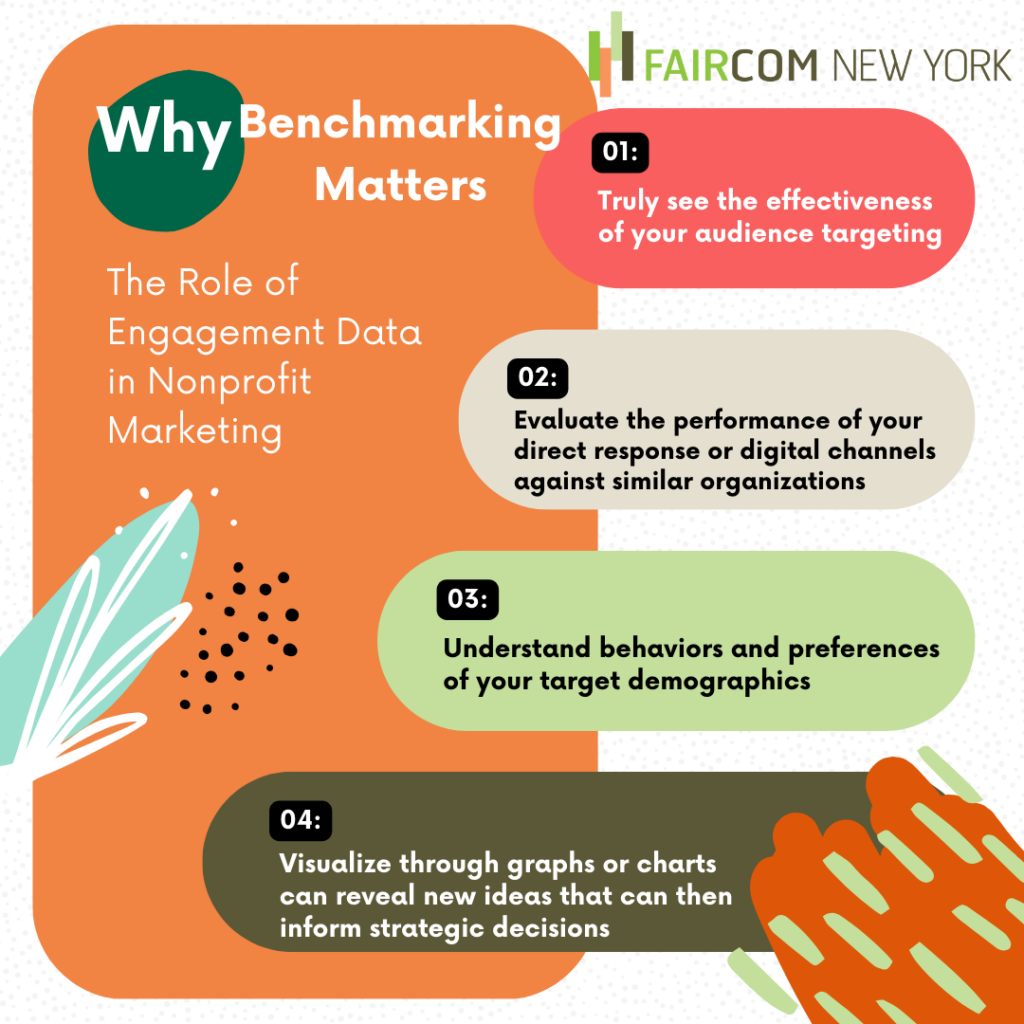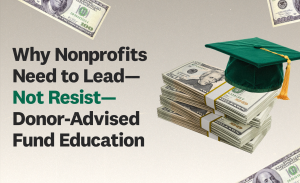Marketing is no longer just about creating catchy slogans and flashy advertisements—it hasn’t been for quite some time. For-profit and nonprofit entities alike are competing for individual attention, and the most successful players are breaking through the noise in the market by offering unique, engaging experiences for their audiences. For nonprofits to stand out with your marketing strategy, we first need to deeply understand your audience, their behaviors, and their philanthropic interactions.
This is where engagement data comes into play. It provides invaluable insights that can help tailor marketing strategies to any layer of the donor pyramid. Let’s delve into how engagement data can be leveraged in marketing, specifically for benchmarking and analyzing donor data.
Understanding Engagement Data
Engagement data encompasses a broad spectrum of metrics that track how individuals interact with your direct mail, social media, other organizations, and digital advertising. It includes direct mail responses, donations, event RSVPs, volunteer hours, social likes, website visits, and much more. Collecting and analyzing this data gives fundraisers (and marketers) a clearer picture of what inspires action from your audience and what doesn’t, enabling you to craft more effective marketing campaigns in the future.
By gathering data on prospect and donor interactions, nonprofits can gain insights into individual behaviors and preferences, leading to a more comprehensive donor profile. This profile can help to create more humanized marketing campaigns, leading to better response rates and increased donor loyalty.
Why Benchmarking Matters
Benchmarking is the process of comparing your engagement data against yourself, industry standards, and/or competitors. It’s a crucial step in understanding where you started, where you stand in the market now, and key areas for improvement.
Benchmarking is a terrific tool to shine a light on:
- The effectiveness of your audience targeting.
- The performance of your direct response or digital channels against similar organizations.
- The behaviors and preferences of your target demographics.
Visualizing this information through graphs or charts can reveal new ideas to inform strategic decisions to keep your marketing momentum moving.

Analyzing Donor Data
By analyzing donor data, organizations can identify which communication channels are most effective for engaging their audience. For instance, some donors may respond better to direct mail campaigns after they’ve engaged with an organization’s social media account. Analyzing donor data, employing nonprofit analytics, and segmenting donors are not just buzzwords; they are essential tools that can drive your organization towards greater success.
Prescriptive Analytics for Fundraising
Engagement data can also be used for prescriptive analytics—the big sister to ‘predictive.’ As opposed to descriptive analytics which tells us the results of a campaign or points out trends in our data or predictive analytics which bases future probabilities on combing through historical outcomes—prescriptive analytics fills in all the blanks so that we understand not only who is likely to respond to our asks, but which channel to ask them through, when to ask them, how they want to be asked, and other personal details that will motivate them. By leveraging historical data, organizations can forecast future giving trends, and plan for seasonal fluctuations in donations while helping nonprofits anticipate the needs of their donor base and adapt accordingly.
Prescriptive analytics forecasts fundraising trends, uncovers deeply nuanced donor behavior patterns and deciphers personal communication preferences like receiving a premium versus a straight appeal. The power of this level of detail enables organizations to adjust their strategies proactively, setting up a marketing campaign for success from the start.
Implementing Data-Driven Strategies
With a wealth of data at their fingertips, nonprofits can make informed decisions that are backed by concrete evidence. Analyzing donor data helps organizations identify trends and anomalies that could indicate potential issues or opportunities. This level of insight is invaluable when it comes to strategic planning and resource allocation, ensuring that efforts are focused where they will have the greatest effect.
The Real Reason Data is So Important: Personalizing Communication
We say all this about data to emphasize that adding a personal touch to your donor communication can significantly impact retention. When you address donors by name, reference their past contributions, or acknowledge their attendance at recent events, it creates a connection that generic communication simply cannot match. Beyond that, you can implicitly start to incorporate personalized triggers for engagement and giving based on their interests, like spotlighting certain story types, leveraging more facts-and-figures-driven impact communications, or incorporating thoughtful tokens of appreciation. Personalized donor communication shows that you value them not just for their wallet, but that you see them as unique individuals and a vital part of your organization’s community.
Ultimately, the goal of personalized donor communication is to enhance the donor experience. When donors feel that their individual contributions are recognized and that they have a personal relationship with your organization, they are more likely to continue supporting your cause. Positive donor experiences can also lead to increased word-of-mouth referrals, expanding your reach and potential for future donations and more data to work from in the future.
The Bottom Line
Engagement data is more than just numbers on a spreadsheet; it’s the foundation of informed marketing decisions. By leveraging this data for benchmarking and analyzing donor behavior, marketers and fundraisers can create targeted, effective campaigns that connect with real people and drive results.



